La Boca is one of the most famous and popular neighborhoods in Buenos Aires, the capital of Argentina. The barrio is best known for its colorful buildings and paper mache statues peeking out of open windows. El Caminito, a street in the center of La Boca, has become a bit of a tourist trap, but there’s so much more to La Boca than cheap souvenirs and overpriced steak dinners. Staying true to its gritty history and working class background, the street art in La Boca, Buenos Aires is the perfect example of contemporary murals.
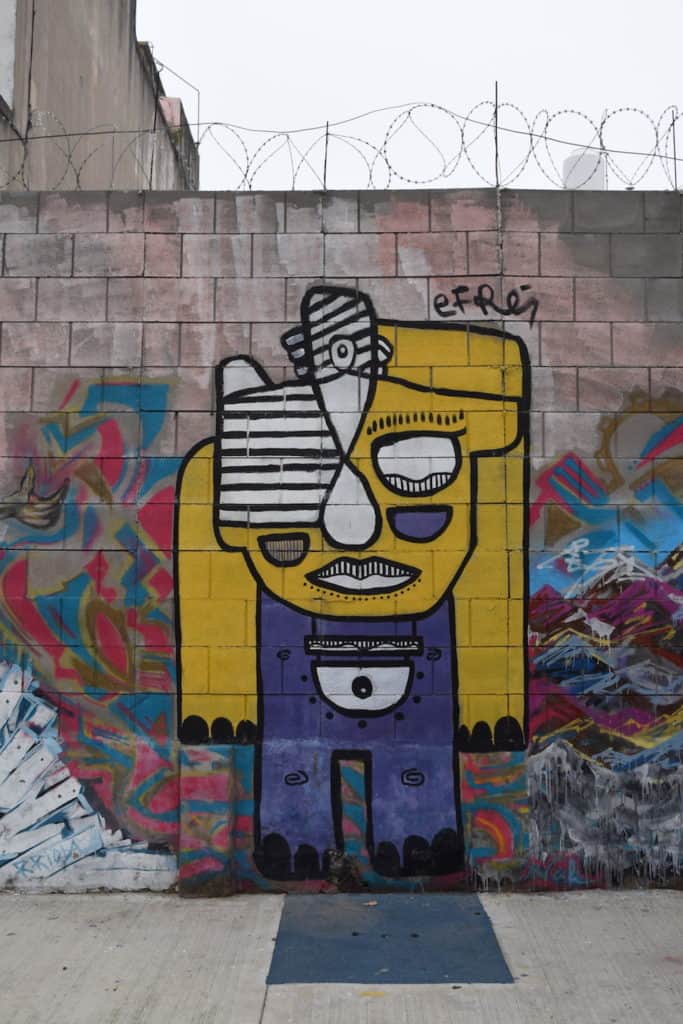
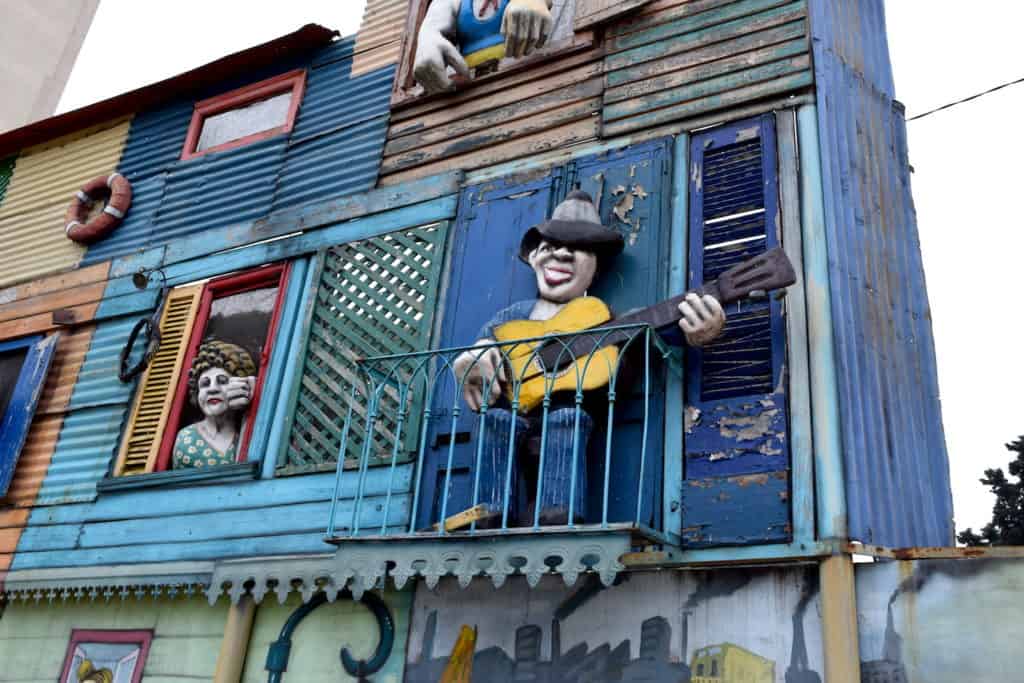
Street art in La Boca connects today to the past
La Boca was founded as an immigrant neighborhood, where new arrivals settled in Buenos Aires. Later, it was a busy port area, where dock workers who worked in the shipyards lived. It remains one of the poorest neighborhoods in Buenos Aires.
La Boca’s colorful buildings have a historical component: Shipyard workers would use pieces of discarded metal to build their homes. Using the little bits of paint they could find, they covered the metal in different colors—usually more than one, since residents would run out of one before covering the entire facade.
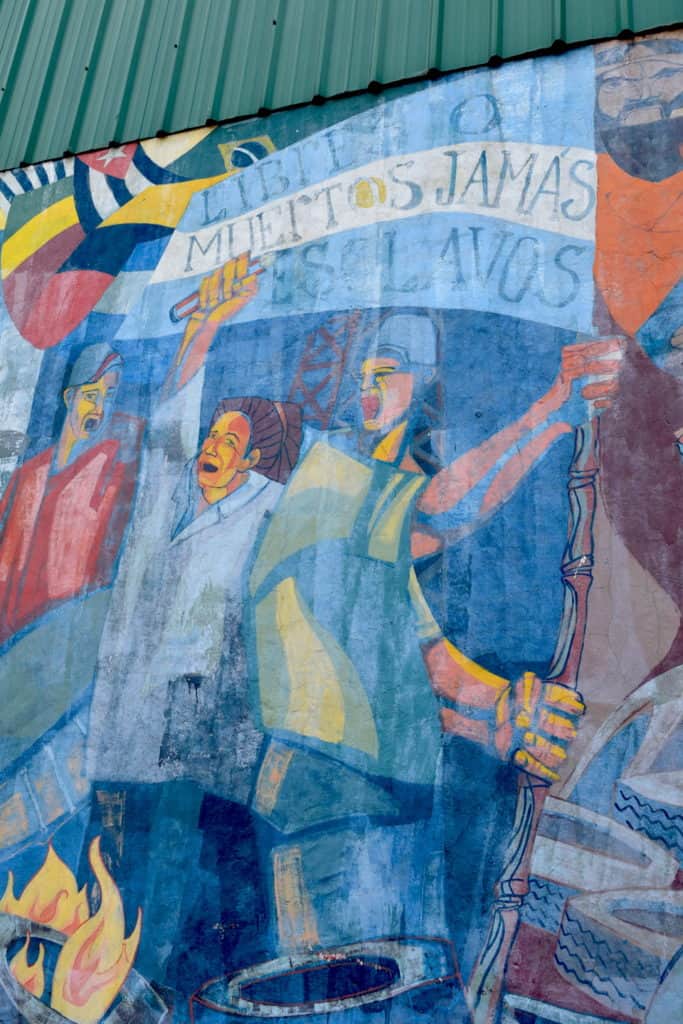
Today, those multicolored buildings are iconic. Another form of expression—street art—also has its roots in La Boca’s working class history.
Street art has traditionally been a way of popular expression. It wasn’t a fine art, the kind of painting you’d find in a museum or hung in the elite’s sitting room. Rather, it was painted on a surface available to everyone—walls in the open air—and it often communicated messages and images of resistance.
The street art in La Boca today is no different.
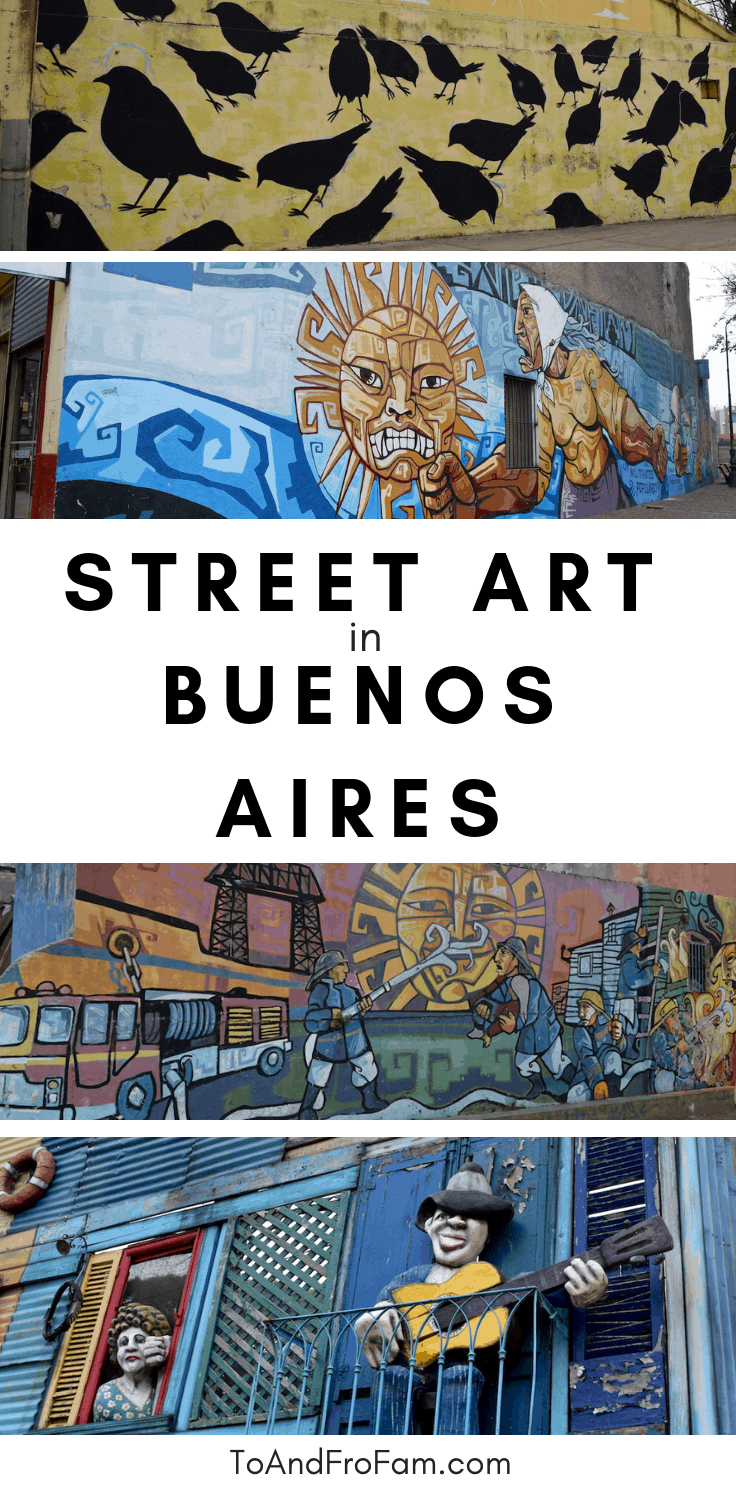
Street art as protest in Argentina
You’d be hard-pressed to look at the street art in La Boca, Buenos Aires and not see messages of political protest. Even if you don’t speak Spanish, the imagery within many La Boca murals clearly calls out injustice and resists oppression.
In La Boca, you’ll see renowned muralists as well as nameless artists using the walls to communicate their message. Some explicitly call for the release of a prisoner or justice for someone who was killed; others represent wider movements, such as the Abuelas de Plaza de Mayo.
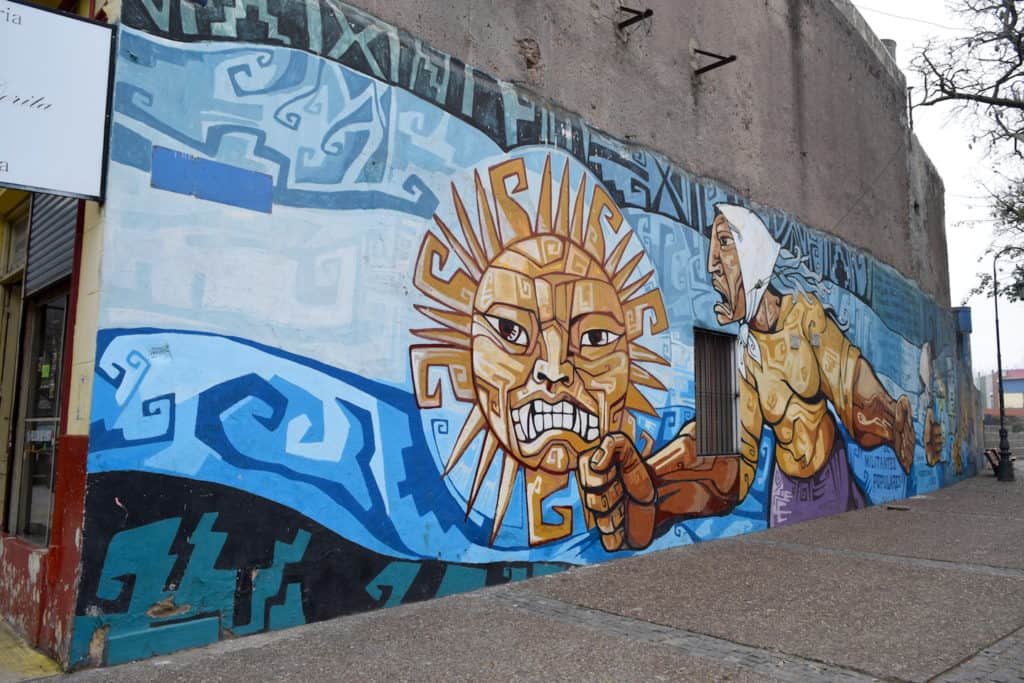
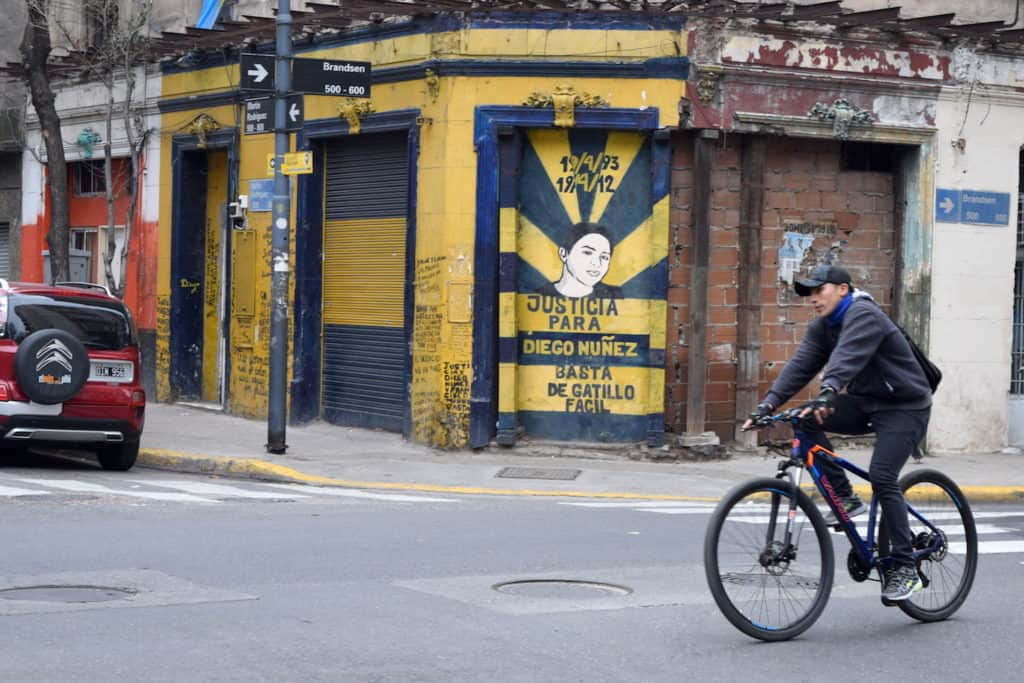
These women, iconic because of the white handkerchiefs they wore over their hair, began protesting during the Argentine dictatorship of the 1970s. They continue to demand that dissidents who were “disappeared” (or their remains) be located, and that children who were taken and adopted by the ruling elites be identified.
Other images of protest are less serious but equally subversive. My favorite: the pope riding a llama. I couldn’t stop laughing!
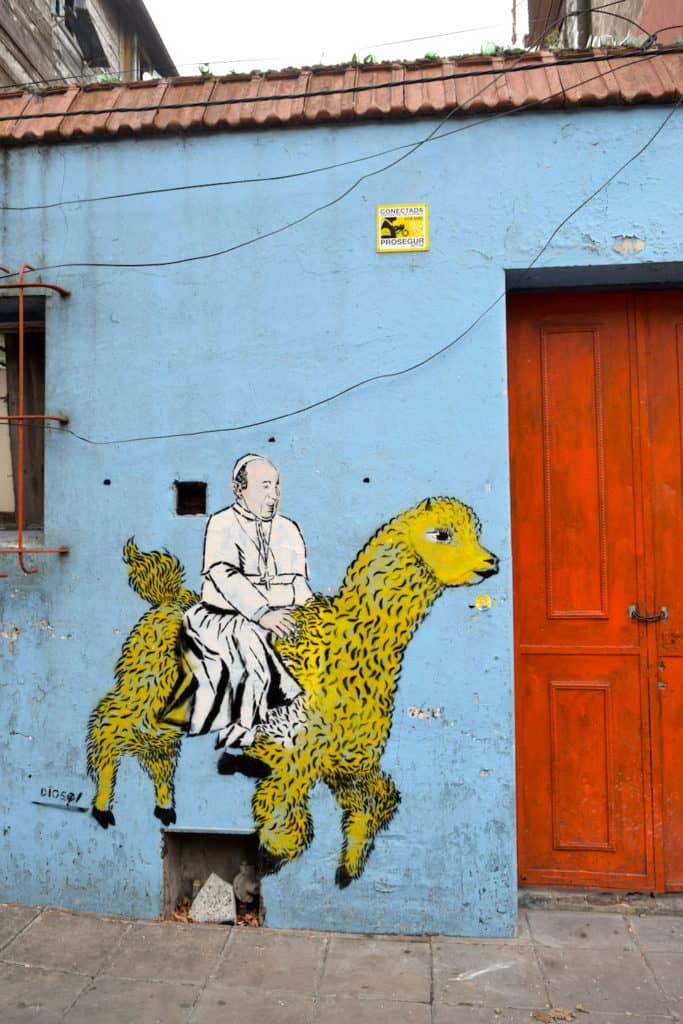
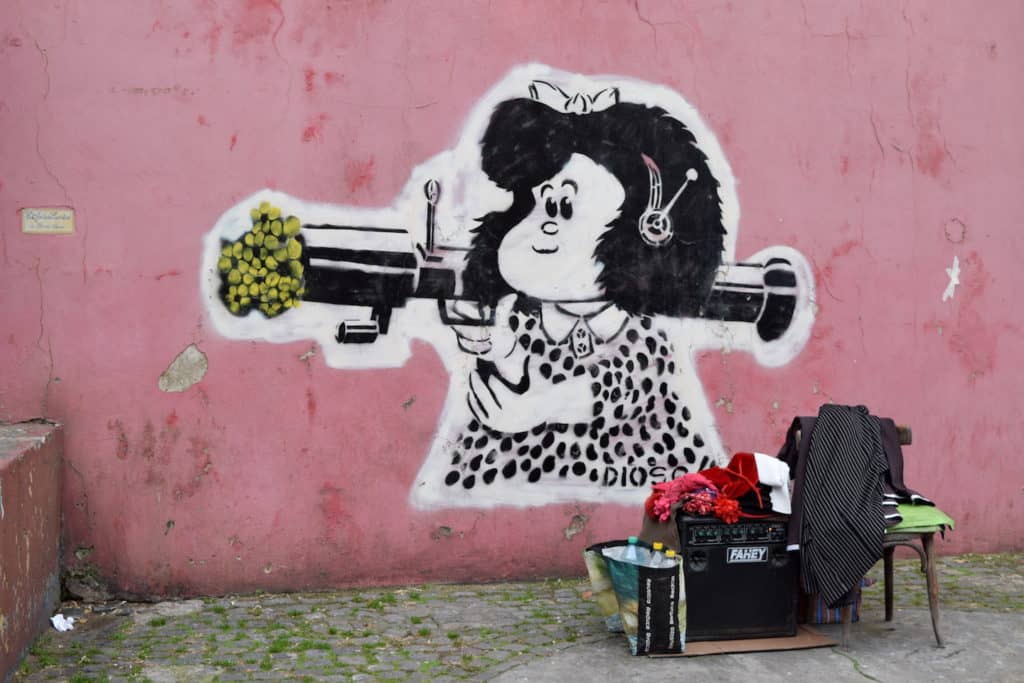
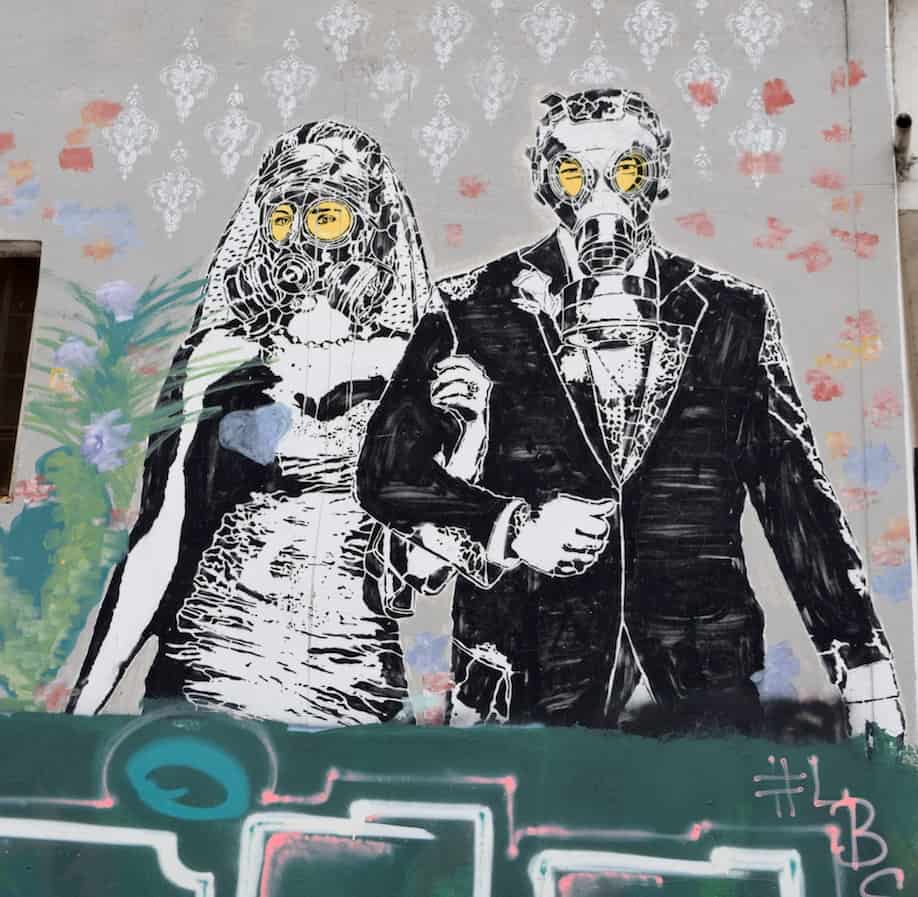
La Boca street art and cultural identity
Artistic expression has been seen as subversive for centuries. Think of the songs enslaved African Americans sang, some of which communicated directions for the Underground Railroad, or Pablo Picasso’s Guernica, which expressed the artist’s outrage over the Spanish Civil War and the oppression by dictator Franco.
The street art in La Boca, Buenos Aires is sometimes subversive in a more subtle way. Many people of indigenous descent in Argentina feel marginalized, so identifying as indígena can sometimes be an act of resistance.
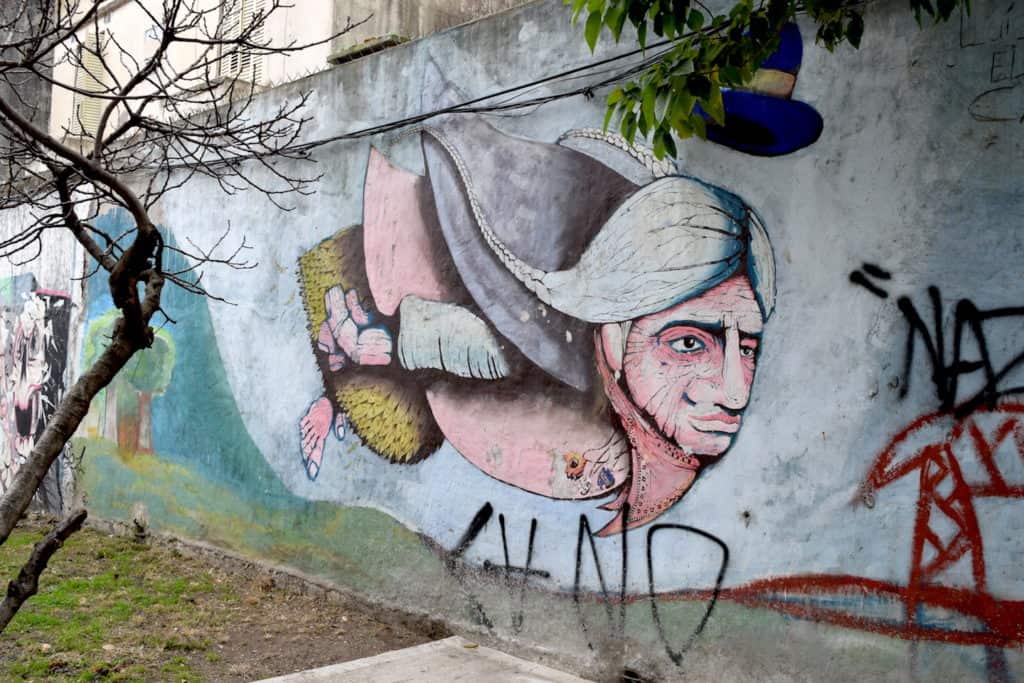
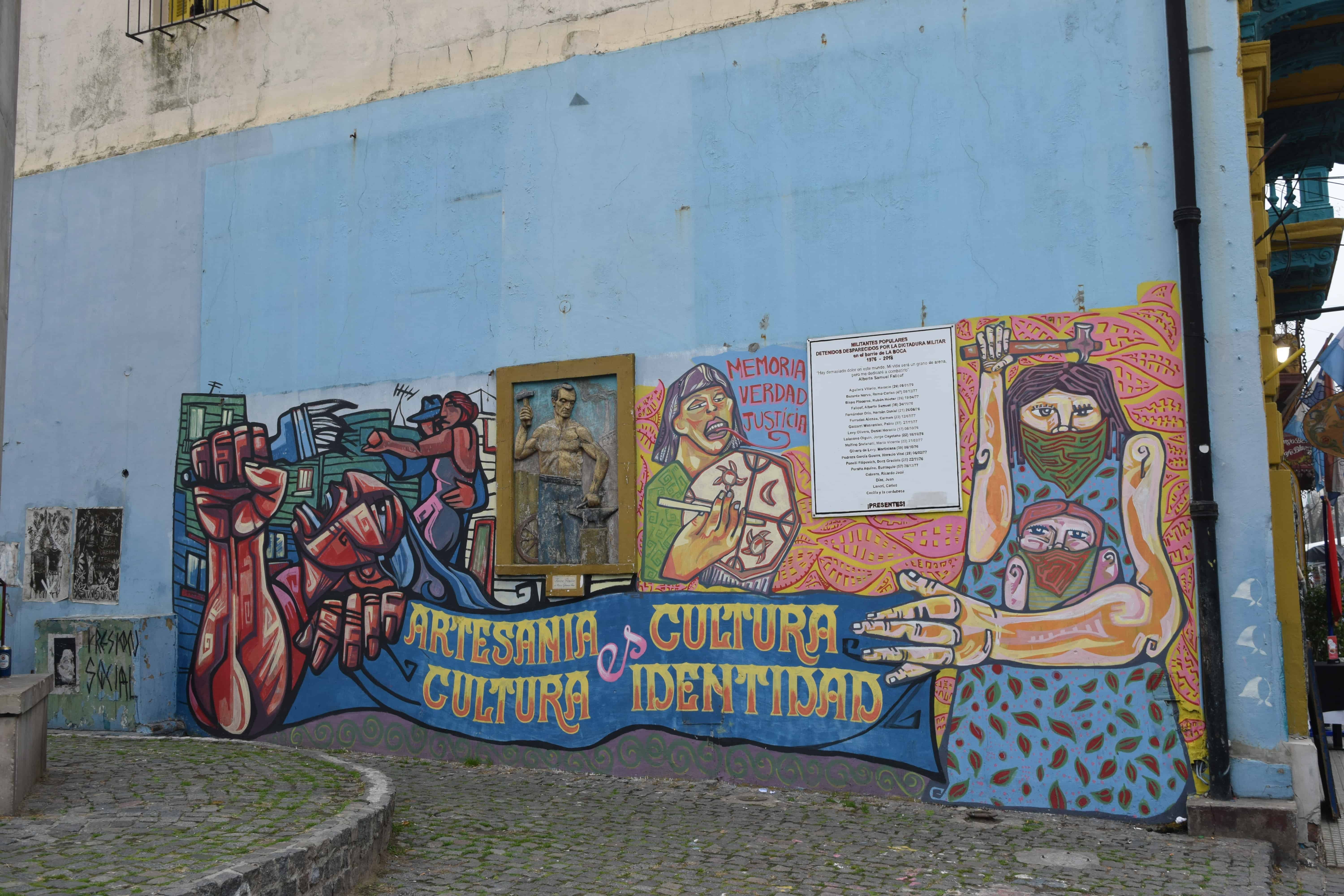
Some of the most famous murals in La Boca contain indigenous imagery and themes. Many of these also contain messages of resistance.
Street art in La Boca depicts history
Like many disenfranchised communities, La Boca is sometimes left out of histories. Yet this neighborhood has fierce pride, and that pride extends far beyond its famous soccer team. (Look for all the blue and yellow everywhere, the colors of La Boca’s soccer club.)
Some of the murals in La Boca depict scenes from its history. In several places you’ll see murals of the bombaderos, or firefighters, who fought a devastating fires in La Boca. They were volunteers who took up the work of the officials, who often neglected this poor area.
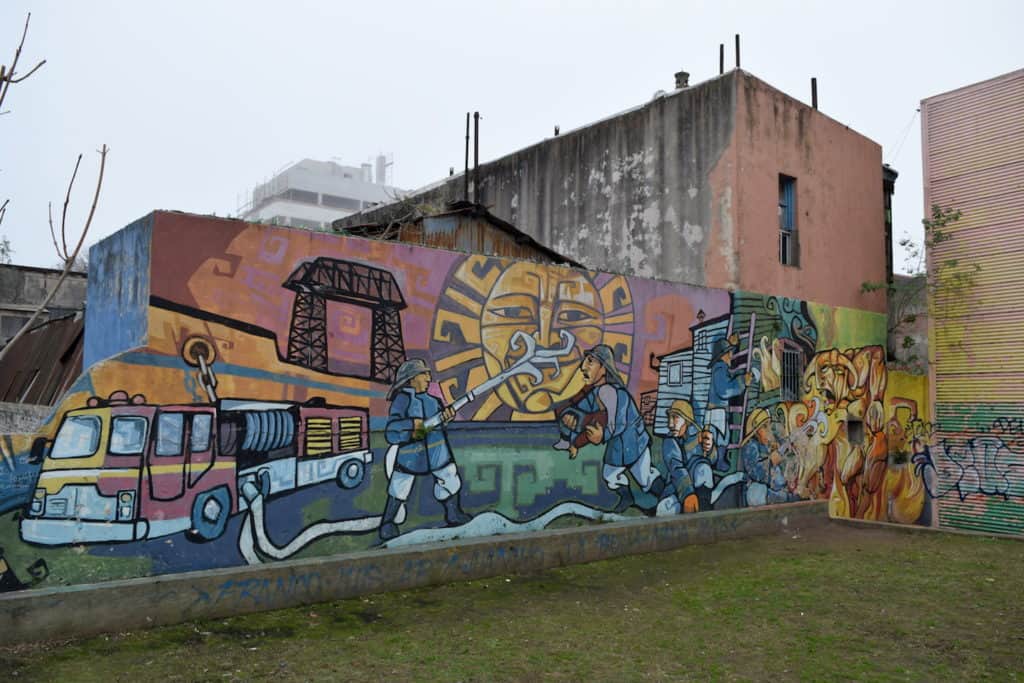
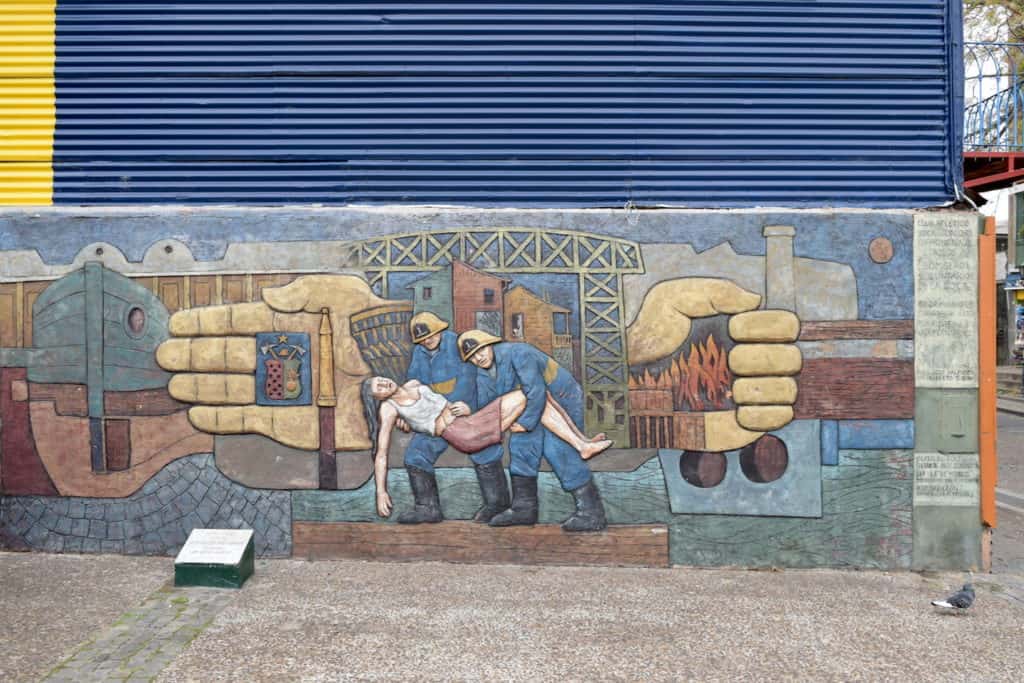
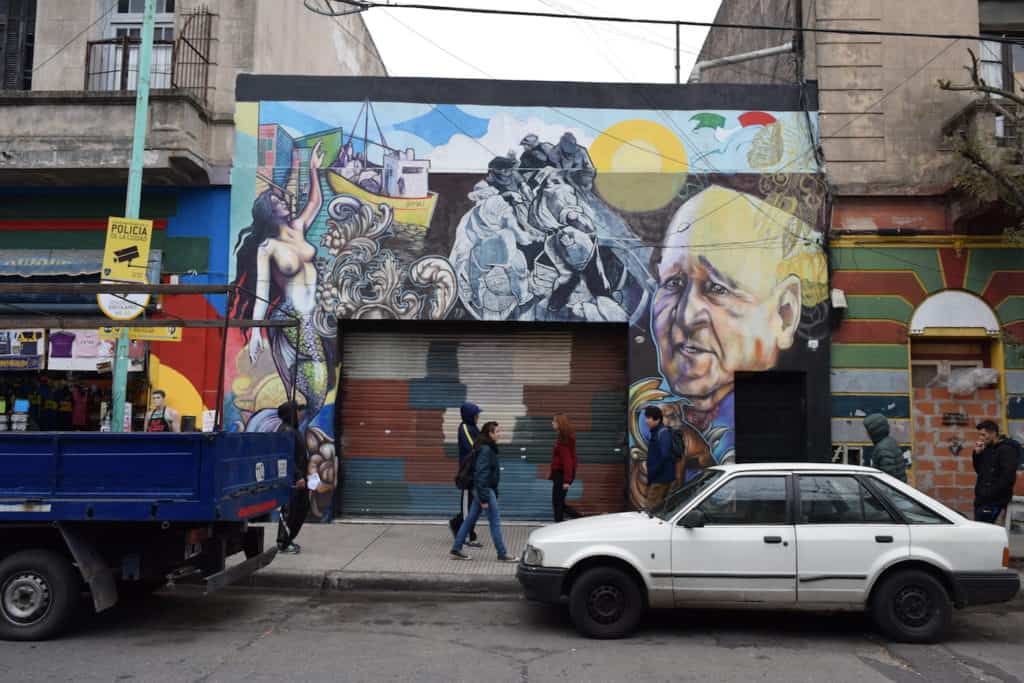
Other murals depict the dock workers and other working class residents of La Boca. History sometimes glosses over the sacrifices of laborers, women the “common people”; street art in La Boca commemorates these untold stories.
Visiting La Boca, Buenos Aires
My usual approach to travel is to walk everywhere. I pick a direction or destination and simply put one foot in front of the other, exploring as I go.
That said, La Boca can be a bit shady. After all, one part of La Boca is a center of tourism, where visitors from across the globe watch tango and take selfies. Just a few blocks from El Caminito, though, much of the neighborhood still lives from paycheck to paycheck. Most of the money spent in La Boca doesn’t make it to the pockets of everyday people.
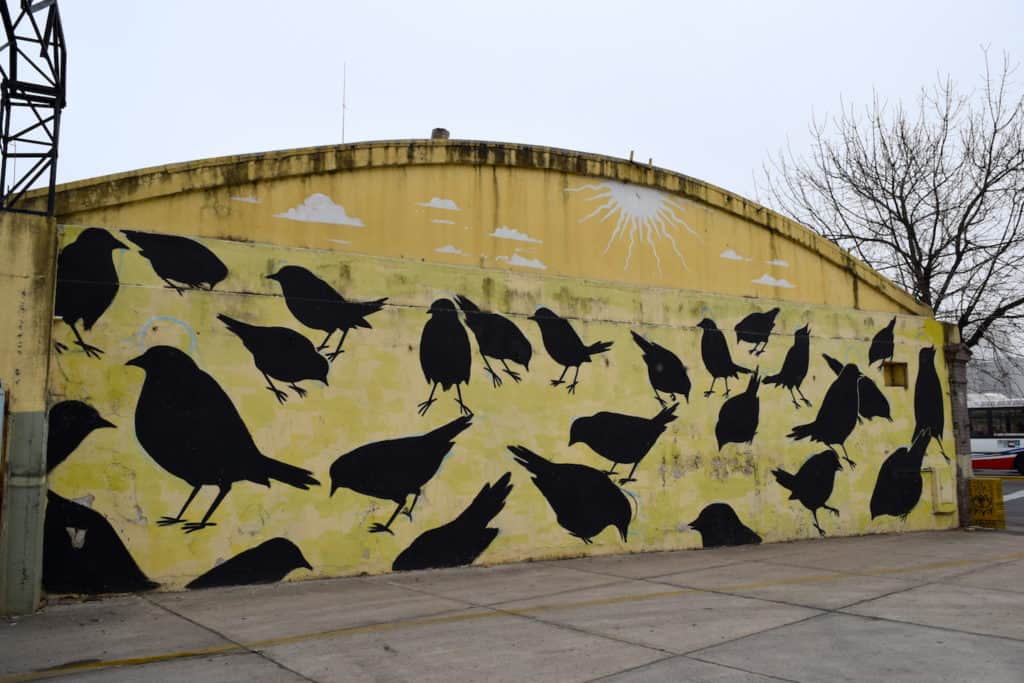
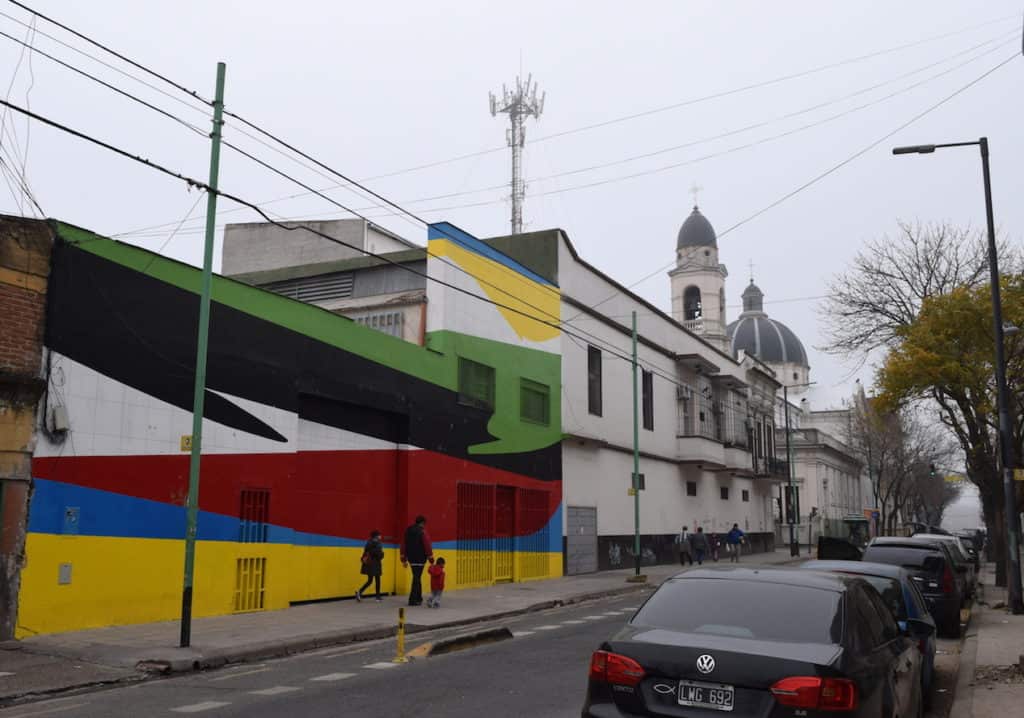
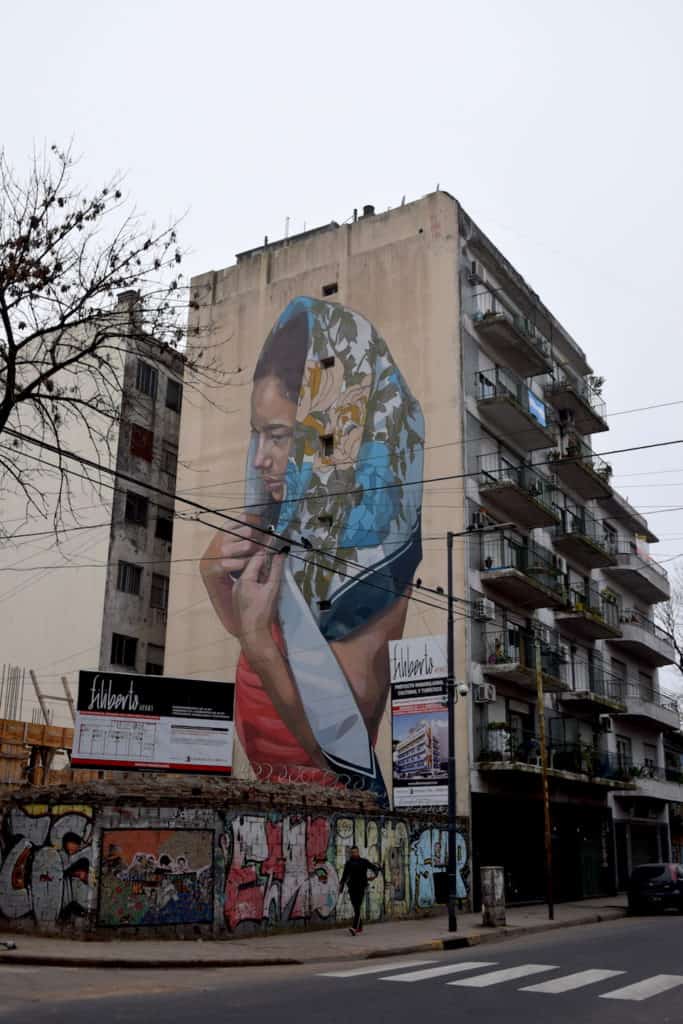
That’s why it’s smart to stick to well trafficked streets, to go in a group, and to always stay aware of your surroundings. I admit I wandered a bit too far off the beaten path when I was exploring La Boca, and it was the only time I felt unsafe while traveling through South America. Thankfully nothing happened, but I’d hate for anyone to end up in a dangerous situation.
I wholeheartedly recommend visiting La Boca. I encourage you to look beyond El Caminito, the street found on just about every postcard from Argentina. You’ll see street art as well as working class life of La Boca’s residents.
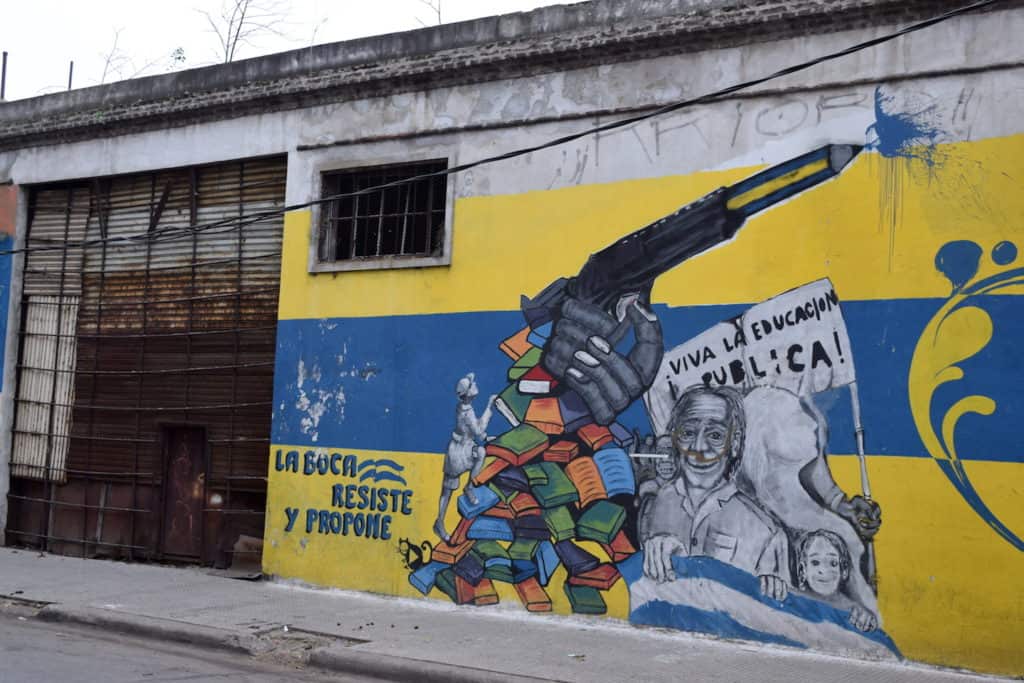
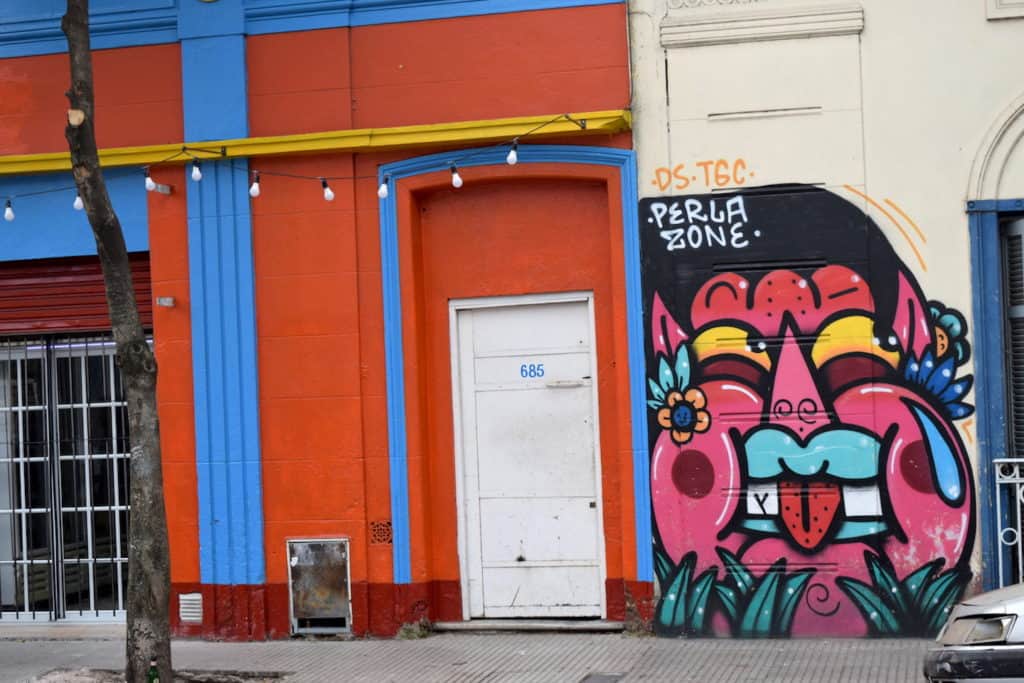
That said, stay safe. Use your head and your eyes, don’t wander alone, and leave La Boca before dark.
I hope you get a chance to visit Buenos Aires and see the street art in La Boca. Take the time to appreciate these murals and you’ll leave with a better sense of the history, politics, and cultural identity of La Boca, Buenos Aires.
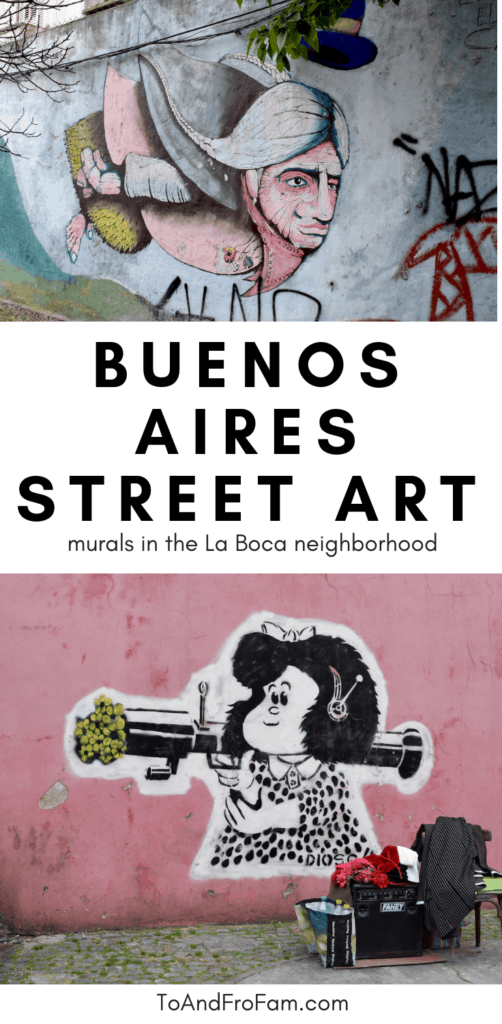
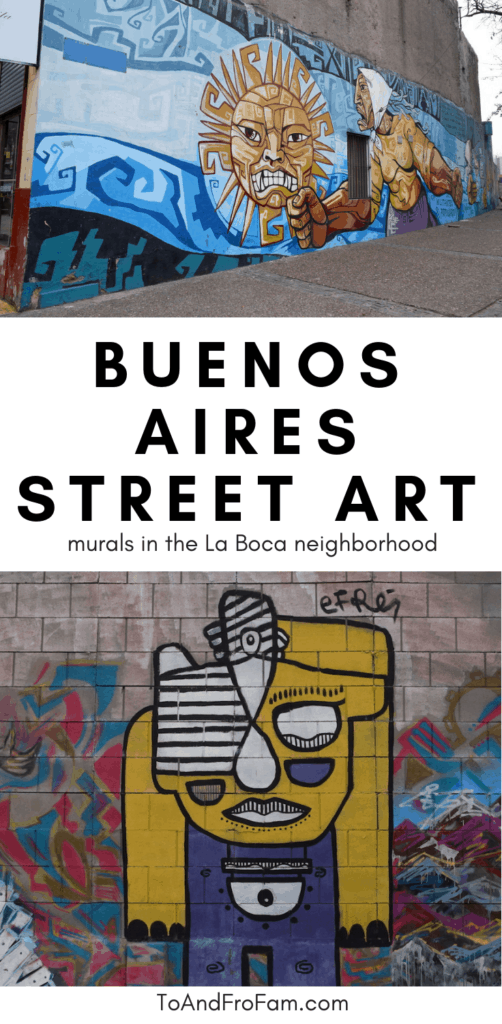
Do you love street art as much as I do? You won’t want to miss my posts on my favorite places to see murals when you travel: Detroit’s Eastern Market and Rosario, Argentina! Click on over for gorgeous examples of street art.

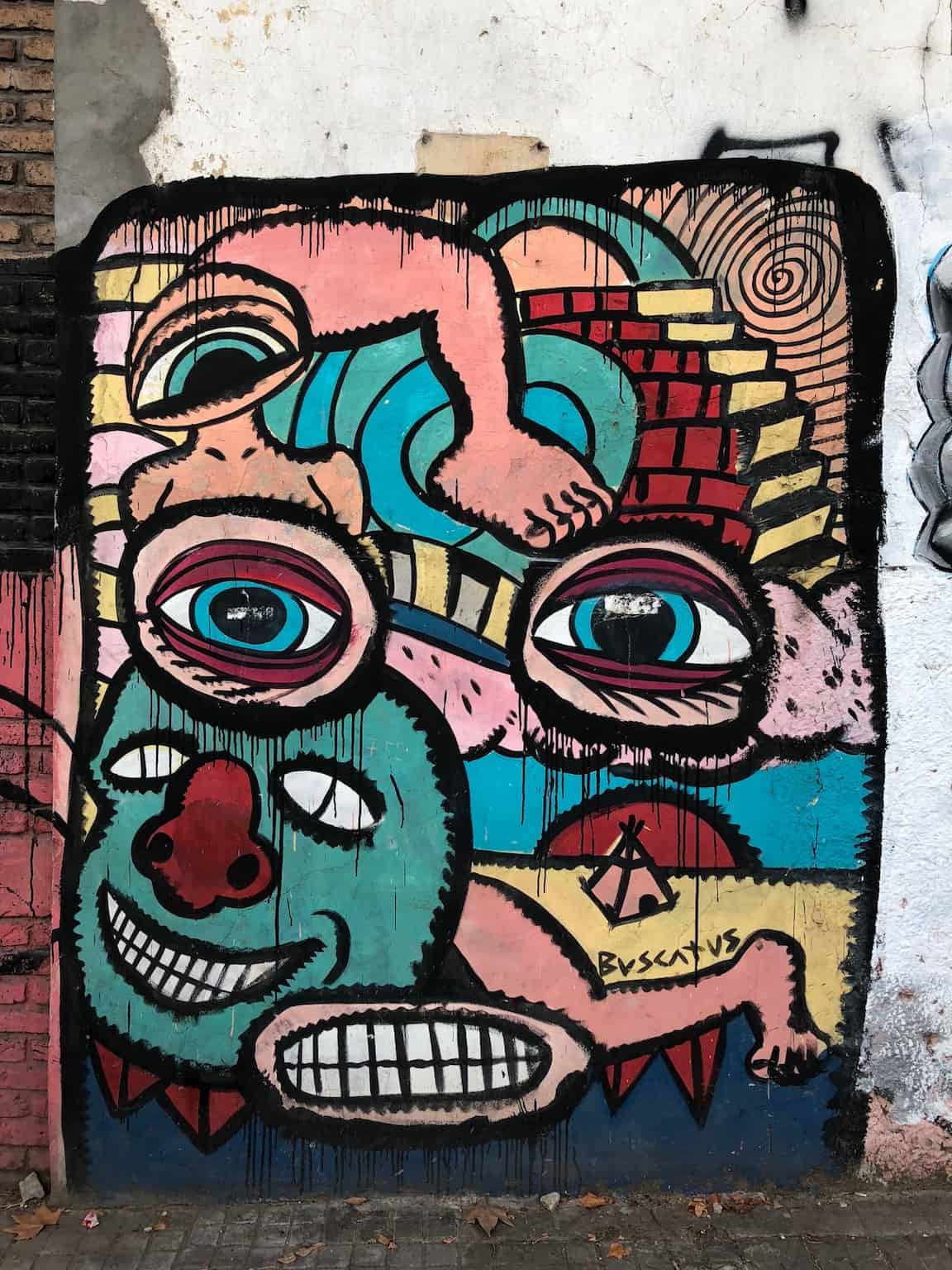




Your photos are fabulous and the story made me want to visit. I may have to stick to the touristy areas tho because I’m not as brave as you are. Great job!
Thanks Vanessa! You can still see many of these murals from the more trafficked areas… you just won’t see as many. Travel well!
Wow you really did a great job finding incredible art in that area. It’s awe-inspiring and definitely tells a story.
Hunting for great street art is one of my favorite things to do while traveling. I’m so glad they spoke to you, too!
Wow! Everything is so vibrant and beautiful! It reminds me a bit of Portland in such a good way!
Yes! One thing I love about the La Boca neighborhood is it’s instantly recognizable. Areas of Portland are definitely like that, too.
I absolutely love street art and these murals are so cool! And yes, be safe there.
For sure. All travelers (and especially women) need to be street smart wherever they go, but especially so in economically disadvantaged neighborhoods.
This is my favorite place in Baires! It’s so vibrat and full of life! People tend to get scared to wander outside of Caminito, so I’m happy to see you did, and you found some amazing art!
So true – people tend to stick to the same well worn paths. I get a bit tired of that. 😉
I would love to explore the street art here! Its so raw and varied. Thanks for sharing!
Yes, that’s one of the things I loved about these murals: They covered so many themes and styles, so there was always something new to see.
This really makes me want to visit Argentina! I’ve always heard that their street art is amazing-there’s so much history and culture depicted in these pieces, it’s absolutely fascinating!
Argentina is such a wonderful country, from the friendly people to the art (and of course the wine!).